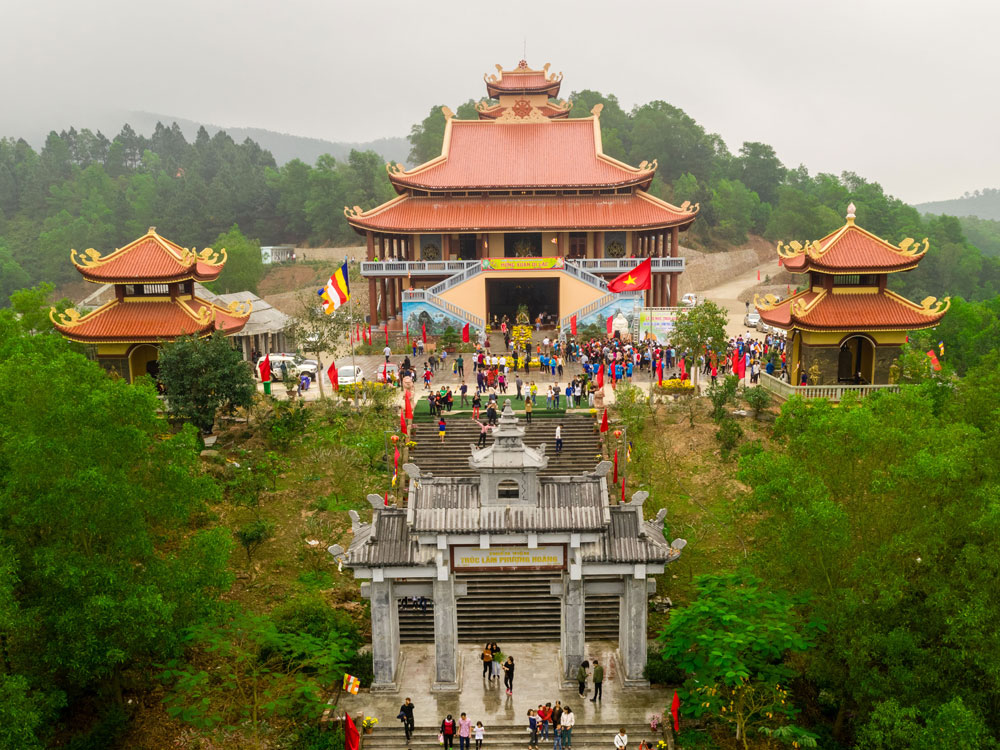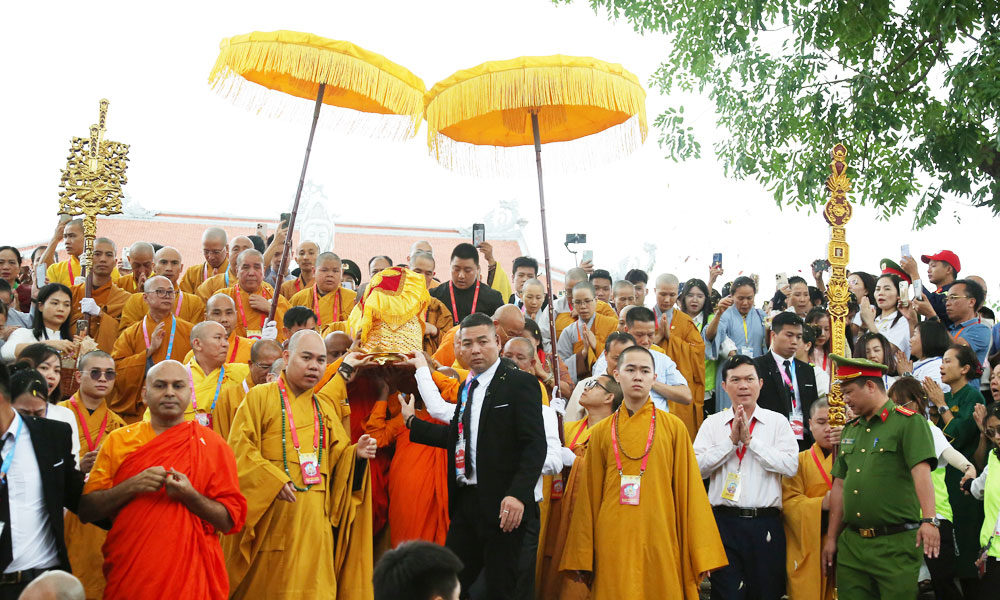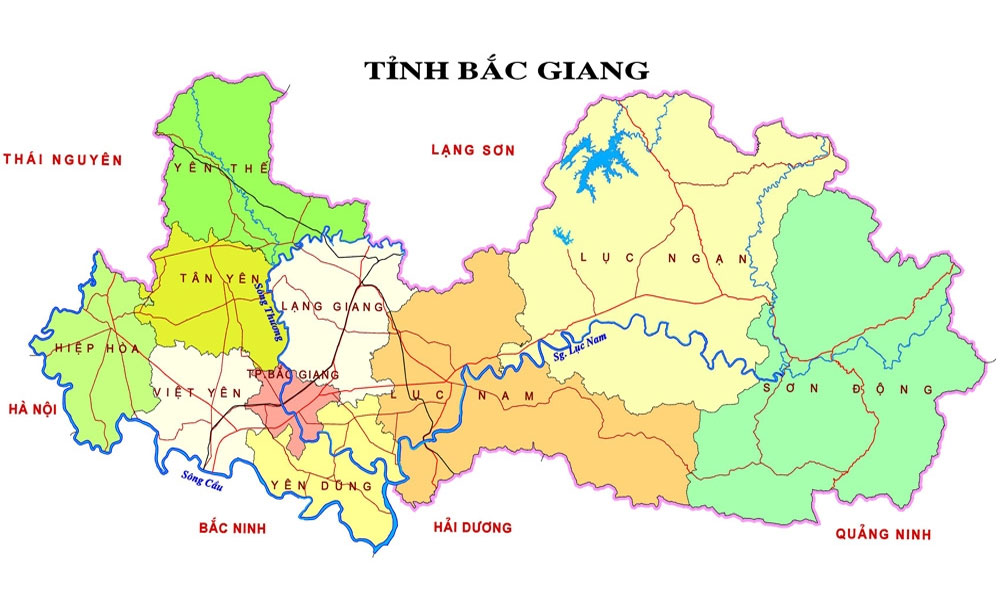Tapping tourism potentials of Phoenix’s land
On mentioning cultural tourism in Yen Dung, Vinh Nghiem pagoda must be referred first as a special national historical relic site where is home to more than 3,000 Buddhist woodblocks recognized by UNESCO as the documentary heritage under the Memory of the World Programme in Asia-Pacific Region.
 |
|
Truc Lam Phuong Hoang Zen Monastery. |
This pagoda is well known for the cultural features with long-lasting historical and spiritual values. It was built in Ly dynasty and refurbished in Tran dynasty (the 13th century) following Truc Lam Zen sect.
The pagoda’s internal area is 10,000 metre square overlooking the Phuong Nhon intersection, where the Thuong merges with Luc Nam river to run into Thai Binh river system. In front of the pagoda is Co Tien (fairy) mountain, poetic Nham Bien range and Tran Hung Dao’s palace on the bank river with convenient road and waterway for tourists.
Vinh Nghiem pagoda festival is held on 14th of lunar February annually, which lasts 3 days including ceremony and activity sections. With its rich historical values (more than 700 years), spiritual, educational and cultural values, Vinh Nghiem pagoda welcomes tens of thousands of domestic and foreign visitors each year to visit, study and admire the poetic landscape here.
Besides, there are other impressive destinations in the Yen Dung cultural tourism complex such as Thanh Nhan temple, Kem pagoda, Thanh Thien princess’s temple, Yet Kieu’s temple, Bo Tan lake, An Thai stone cave and Toan Thanh communal house.
Thanh Nhan temple is located at Minh Phuong residential group, Nham Bien town. Standing still over the feudal dynasties and being embellished for many times, this temple is a mixture of architectural styles of different dynasties.
The temple was seriously destroyed in the wars. Its architecture and landscape have been renovated by local people but some precious antiques such as the cast-iron incense burner moulded in the first year of Thanh Hoa era (1465), the out-side stone altar and the stone pillar engraved with a couplet of geographical declaration have been still preserved.
Kem pagoda or Sung Nham pagoda, a special national relic site located at the root of Nham Bien range was built in 15th century at a deep position of a bow-shaped canyon leaning on Cot Co cliff and Dau Son hill. On the top of the pagoda is Thach Phong tower built in the 17th century where preserving sarira of Giac Hai Zen master.
Kem pagoda is surrounded with picturesque landscapes, cool weather, green trees creating a dreary and quiet atmosphere, year-round blooming flowers, large Chuong lake on the right, Bai Trong on the left, Suoi Tien (fairy stream) by the side of the pagoda, winding roads, Suoi Nua (Nua stream), Gieng Tien (fairy well) and Ao Tien (fairy pond) with year-round full water. Ahead the pagoda is the tower garden containing sarira of the generations of the pagoda’s head monks and nuns. Duong Mo (wooden bell-like pathway) at the end of the tower garden looks like a wooden bell in the pagoda.
In front of Kem pagoda is road 389 connecting Bac Giang with Hai Duong and Bac Ninh provinces. Next to the pagoda is road 299 connecting Bo Tan lake, Kem pagoda, Thanh Nhan temple, Ba Tong communal house, King Tran Minh Tong’s and King Tran Nhan Tong’s temples, Memorial Site of Uncle Ho and Vinh Nghiem pagoda.
Kem pagoda festival takes places on 21st of lunar August, the same day with Kiep Bac temple festival in Chi Linh, Hai Duong province which lures a large number of visitors.
There are also Cau temple, An Quoc pagoda, Ngoc Lam temple, Hoang Khanh pagoda and Hang Cham pagoda on the cultural spiritual tourism route of Yen Dung, all of which lean back the Nham Bien mountain range.
It can be said that all temples and pagodas in Yen Dung district are attached to the legends and cultural stories for the next generations to collect, study and edit.
Phuong Hoang (Phoenix) mountain range or Nham Bien mountain or Neo mountain awakens curiosity of tourists when coming to Yen Dung. This mountain range consists of by 99 mountains of different sizes.
There are many mountains in the Nham Bien range complex with meaningful names such as Hon Giua mountain, Cot co mountain, Ong Dong mountain, Troi Trau mountain, Deo Kim mountain, O Ga mountain and Con Voii mountain especially Non Vua mountain.
Each name has its own legend. Mot Trong is one of the beautiful mountains created by overlapped big stones like a giant stone table.
Specially, Truc Lam Phuong Hoang Zen Monastery has been built on Nham Bien rang from mobilized fund resources with some completed items including the 3,000- square metre main hall.
Yen Dung golf court and service complex is another attractive destination in Tien Phong and Yen Lu communes, Yen Dung district. This is a 36-hole golf court with supporting services like restaurants, hotels, resorts, spa, sport area and technical zone meeting international standards.
The project of Yen Dung golf court and service complex is aimed to realize the socio-economic development targets of the province and Yen Dung district contributing to implementing the province’s policy for tourism and service development.
Yen Dung land is also home to many other cultural and art varieties such as traditional Cheo singing, Ca tru (ceremonial singing), Quan ho (love-duet singing) and folk tales from the villages of fun stories embodying the cultural features of ancient Kinh Bac region like No Muoi village in Noi Hoang and Nu Cuoi (smiles) village in Dong Loan. These traditional types of folk culture have been recovered to meet the local people’s and tourists’ demands for culture enjoyment and relaxing.
The natural and cultural resources, tourism, infrastructure, natural and social environment as mentioned above are components to create a new face of cultural tourism in the district. Yen Dung has been making use of its available advantages to combine relic and heritage preservation with tourism development.
In near future, this land will become an important highlight for economic, tourism and service development in line with cultural development in not only the district but also the whole province.
Tran Duc Hoan
 Bắc Ninh
Bắc Ninh











Reader's comments (0)